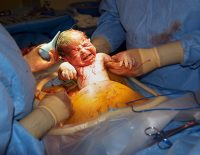WHO aims at quality health services for all

Ahead of World Health Day to be held on Sunday, the WHO South-East Asia Region, Regional Director, Saima Wazed, said the realizing the right to health for all means creating conditions where everyone, everywhere can access high quality health facilities, services and goods that prioritize people’s needs, understanding and dignity. She said that the region has achieved 68.5 per cent reduction in the maternal mortality ratio between 2000 and 2020. Under-five mortality rate declined significantly from 84 per 1000 live-births in 2000 to 29 per 1000 live-births in 2021 and the neonatal mortality rate from 41 per 1000 live-births in 2000 to 17 per 1000 live-births in 2021. The new HIV infection has also declined by 25 per cent and malaria incidence by 62 per cent between 2015 and 2021. However, she highlighted despite progress, there is a considerable way to go to make the right to health a reality for all in the region.
As WHO marks its seventy-sixth year on 7 April, the South-East Asia Region has seen many gains and has much to celebrate with regard to the right to health. The Universal Health Coverage service coverage index has improved from 47 in 2010 to 62 in 2021. The average density of medical doctors, nurses and midwives in the Region stands at 28.05 per 10, 000 population, up by 30.5% since 2015. The Region achieved a 68.5% reduction in the maternal mortality ratio between 2000 and 2020. Under-five mortality rate declined significantly from 84 per 1000 livebirths in 2000 to 29 per 1000 livebirths in 2021 and the neonatal mortality rate from 41 per 1000 livebirths in 2000 to 17 per 1000 livebirths in 2021. Between 2015 and 2021 new HIV infections declined by 25% and malaria incidence by 62%.
However, despite progress, we still have a considerable way to go to make the right to health a reality for all in the WHO South-East Asia Region, the Regional Director said.
Despite global commitments to the right to health, nearly 40% of the Region’s people lack coverage by essential health services. Investment in health by national governments, which is the foundation of advancing the right to health, is unacceptably low, which has resulted in high out-of-pocket expenditure. The proportion of households experiencing financial hardship in accessing basic health care has been rising.
TB mortality rate in the Region increased by 8.6% in 2021 compared to 2015. The probability of death between the ages of 30 and 70 years from four major diseases – cardiovascular diseases, cancer, diabetes and chronic respiratory diseases – is still unacceptably high at 21.6%.
The poorest and groups with vulnerabilities face the greatest barriers in accessing needed healthcare, often with catastrophic consequences for their health and wellbeing. Poor quality care accounts for more disease and deaths than lack of access to care.
The Regional Director said gender inequality affects equitable access to diagnosis and treatment of non-communicable health conditions. For example, compared with men, a higher proportion of women with raised blood glucose go untreated. This diagnosis and treatment gap is also seen for hypertension.








Comments